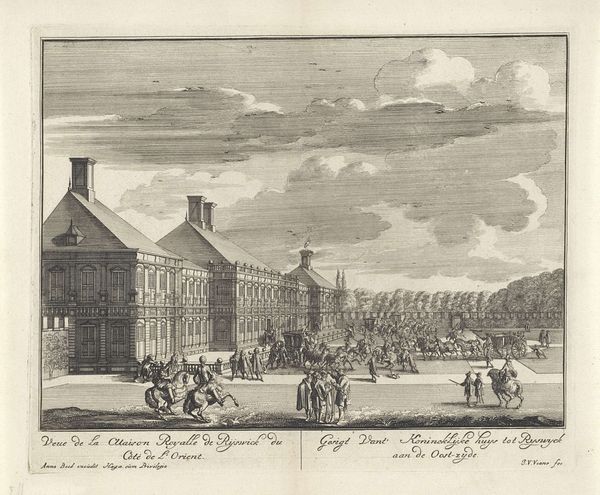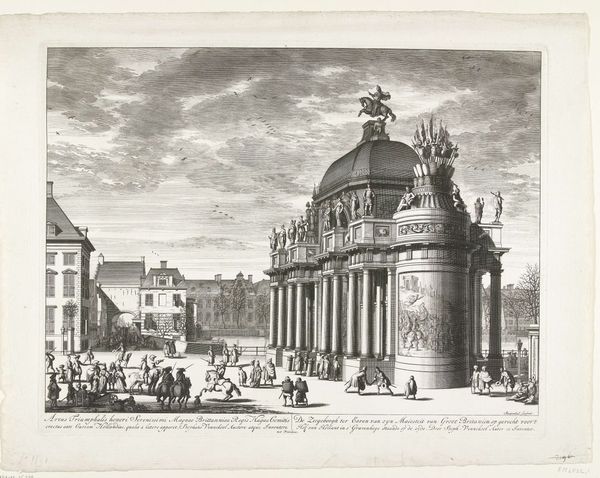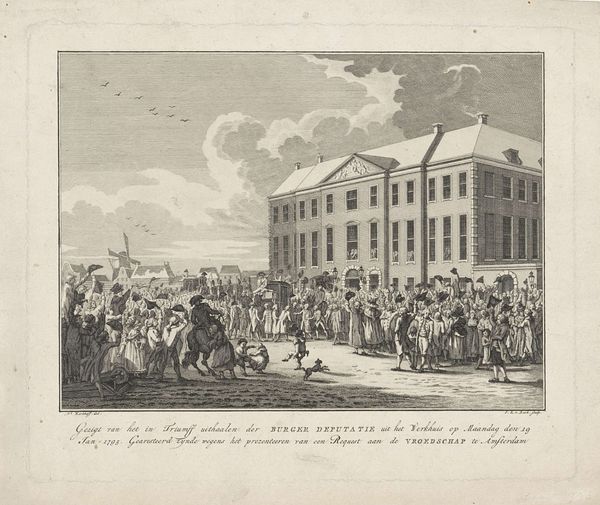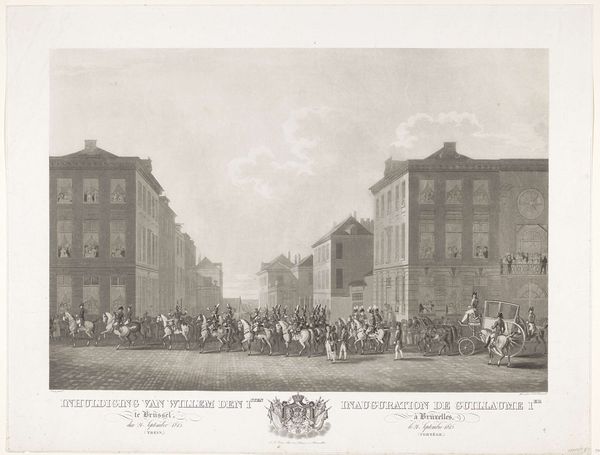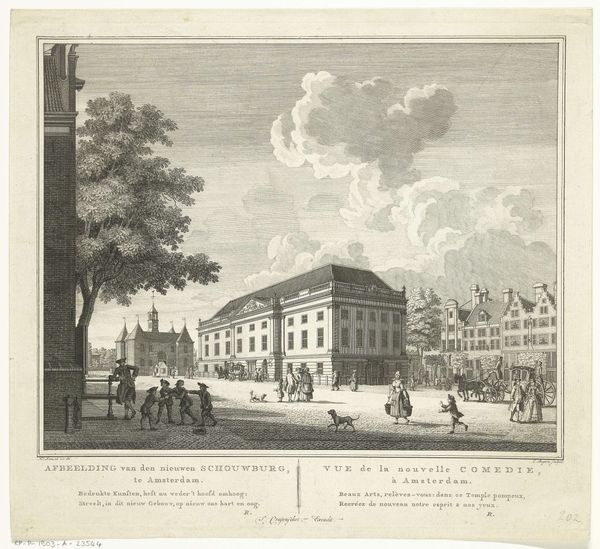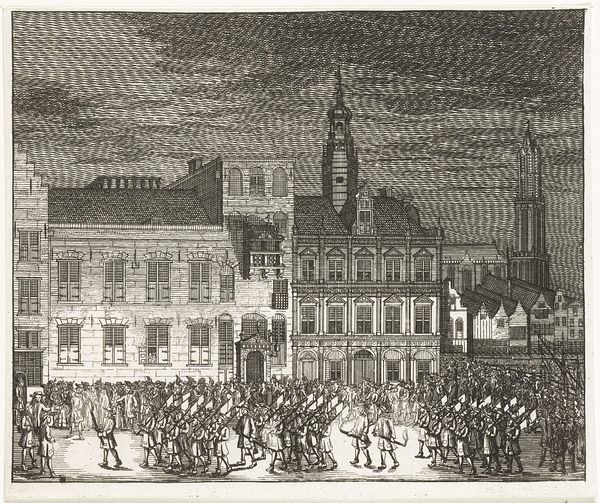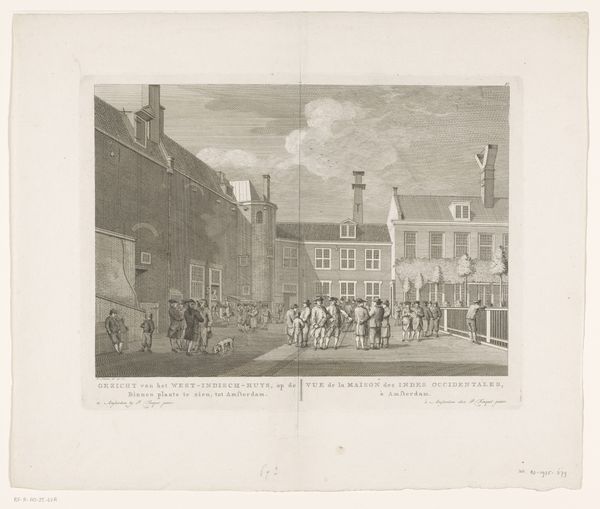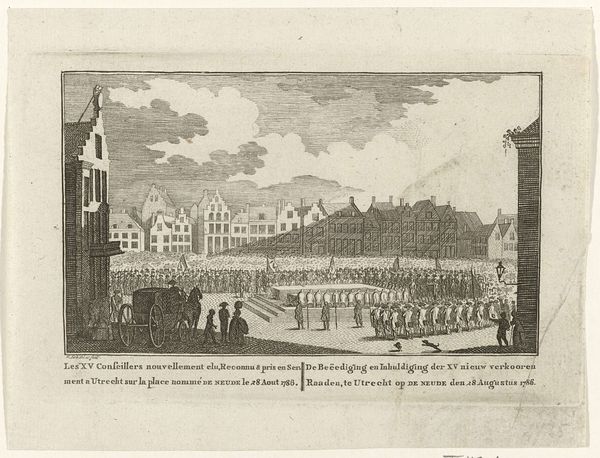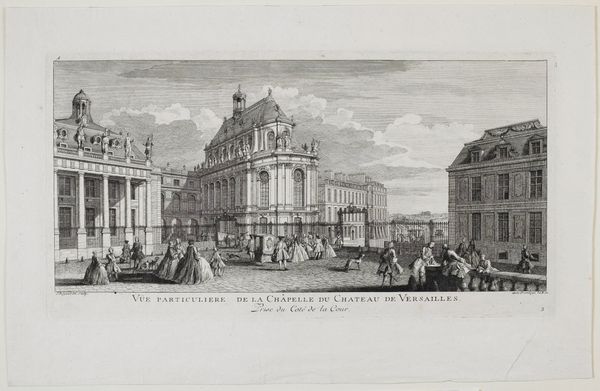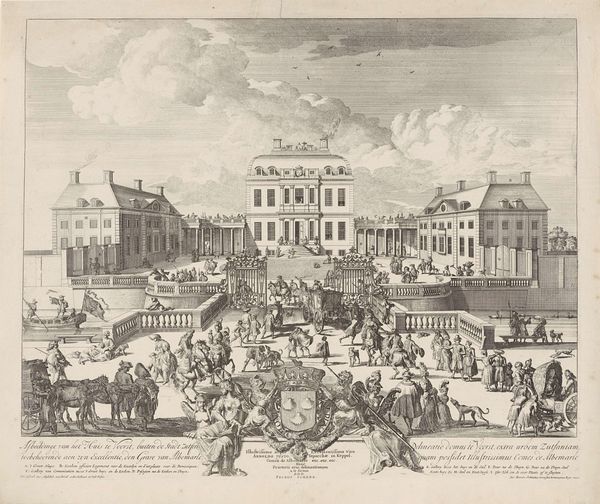
print, engraving
#
neoclacissism
# print
#
old engraving style
#
landscape
#
cityscape
#
history-painting
#
engraving
Dimensions: height 207 mm, width 264 mm
Copyright: Rijks Museum: Open Domain
Curator: Let's discuss this intriguing print, "Lodewijk XVI naar de Temple gevoerd, 1792," or "Louis XVI Taken to the Temple," crafted in 1801 by Reinier Vinkeles. Editor: My initial impression is one of restraint and stoicism. Despite depicting a pivotal moment, there's a classical order imposed, a starkness that mutes the potential drama. Curator: Absolutely. Vinkeles' Neoclassical style prioritizes line and form. The architectural elements—the Temple itself—are rendered with meticulous precision, almost overwhelming the human figures in the foreground. Note how the linear perspective leads the eye directly to the building. Editor: And that Temple becomes the symbolic focal point. It looms like a cold, impersonal authority. Louis XVI's carriage, dwarfed by the architecture, underscores the diminution of his power and status, almost an icon of the tragic fall from grace. Curator: The engraving technique, too, reinforces the feeling of control. Every line seems deliberate, contributing to a sense of somber monumentality. The limited tonal range—the greyscale—further underscores this. Editor: It's interesting how Vinkeles utilizes light. The figures appear almost uniformly lit, devoid of dramatic chiaroscuro, giving no figure emotional prominence over any other. Instead, they merge to almost underscore an event enacted at the behest of many against the one. Curator: The work evokes the philosophy behind neoclassicism itself. Namely that humanity should control their passions and impulses through the guidance of reason and logic. Editor: This is where cultural memory is engaged through specific iconography, with buildings rendered as monumental backdrops. The print reminds me of ancient Roman Triumphs. In antiquity, Roman citizens viewed such marches with pride, now these scenes have a vastly different significance. It showcases not the triumph of leaders, but the deposition of them by the masses. Curator: A potent reminder of history's capacity to shift meaning, viewed through different eyes and changing cultural norms. Editor: Indeed, it's an intriguing engraving, ripe with formal complexities and layered with symbolic meaning. A testament to the power of visual representation during periods of momentous change.
Comments
No comments
Be the first to comment and join the conversation on the ultimate creative platform.
